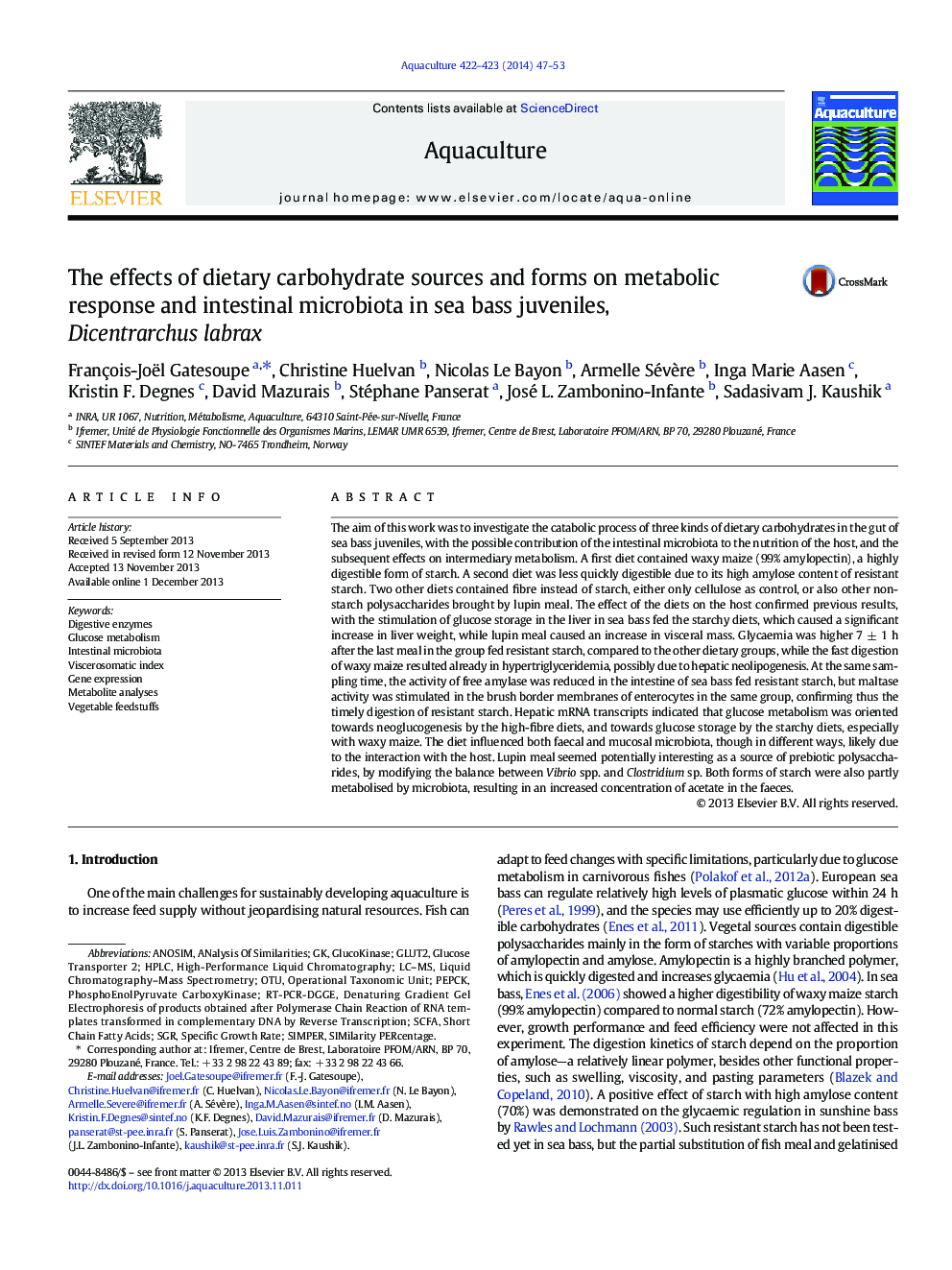| کد مقاله | کد نشریه | سال انتشار | مقاله انگلیسی | نسخه تمام متن |
|---|---|---|---|---|
| 2421938 | 1552861 | 2014 | 7 صفحه PDF | دانلود رایگان |

• The diet of sea bass juveniles can contain at least 25% starch.
• The metabolic response to dietary carbohydrates is flexible.
• More than 30% lupin meal can be introduced, with possible prebiotic effect.
• Intestinal microbiota is influenced by the diet.
• Microbes contribute to starch digestion, as shown by acetate production in faeces.
The aim of this work was to investigate the catabolic process of three kinds of dietary carbohydrates in the gut of sea bass juveniles, with the possible contribution of the intestinal microbiota to the nutrition of the host, and the subsequent effects on intermediary metabolism. A first diet contained waxy maize (99% amylopectin), a highly digestible form of starch. A second diet was less quickly digestible due to its high amylose content of resistant starch. Two other diets contained fibre instead of starch, either only cellulose as control, or also other non-starch polysaccharides brought by lupin meal. The effect of the diets on the host confirmed previous results, with the stimulation of glucose storage in the liver in sea bass fed the starchy diets, which caused a significant increase in liver weight, while lupin meal caused an increase in visceral mass. Glycaemia was higher 7 ± 1 h after the last meal in the group fed resistant starch, compared to the other dietary groups, while the fast digestion of waxy maize resulted already in hypertriglyceridemia, possibly due to hepatic neolipogenesis. At the same sampling time, the activity of free amylase was reduced in the intestine of sea bass fed resistant starch, but maltase activity was stimulated in the brush border membranes of enterocytes in the same group, confirming thus the timely digestion of resistant starch. Hepatic mRNA transcripts indicated that glucose metabolism was oriented towards neoglucogenesis by the high-fibre diets, and towards glucose storage by the starchy diets, especially with waxy maize. The diet influenced both faecal and mucosal microbiota, though in different ways, likely due to the interaction with the host. Lupin meal seemed potentially interesting as a source of prebiotic polysaccharides, by modifying the balance between Vibrio spp. and Clostridium sp. Both forms of starch were also partly metabolised by microbiota, resulting in an increased concentration of acetate in the faeces.
Journal: Aquaculture - Volumes 422–423, 20 February 2014, Pages 47–53